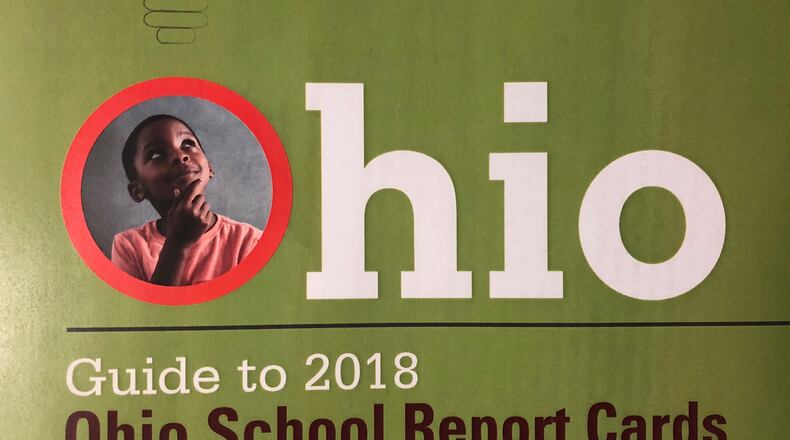RELATED: See report card grades for local school districts
The workgroup, an outgrowth of the state school board, made recommendations months ago, such as eliminating A-F letter grades and certain achievement and early literacy measures. Leaders of the group said last week the coming election of a new governor and legislature is a complicating factor, but the group will meet again Wednesday afternoon in Columbus.
Meanwhile, last spring, House Bill 591 aimed to replace the state report card with a “dashboard” presentation of test data and other metrics. The bill had committee hearings in the state House, but it did not proceed to a vote. Bill sponsor Mike Duffey, R-Worthington, said Monday the legislature is considering changes to high school graduation law for the lame-duck session, and some pieces of his bill could be incorporated there.
Duffey said he hopes for a more holistic review of the report card system. He said too much of the report card is based on students’ pure achievement on state tests, which is affected by whether they were academically behind before they ever walked through a school’s doors.
RELATED: State considers long- and short-term graduation changes
“What I hold school districts accountable for, and what I think most people think an education really is, is how much did you grow the student (each) year?” Duffey said. “I think most of the grade, if there is a grade, should be on student growth. … It should be on things the schools can control.”
The problem with the “student growth” approach is Ohio educators and politicians are not in broad agreement on whether the state’s existing measure of growth (or “progress”) is a valid one. Duffey cited multiple concerns with the calculations, the inability to compare it to other states, and the lack of transparency around the measure.
The state workgroup’s July report made firm recommendations in several areas, but it said measuring student growth is complex and would be revisited this month. The report included an eight-point appendix solely about measuring growth, including themes about the underlying tests, inconsistent results between different types of tests, how important growth is, and how hard it is to explain to the public.
RELATED: National ACT scores among worst in decades
“The idea of measuring growth is really intuitive,” said Chris Woolard, senior executive director of accountability for the Ohio Department of Education. “Actually measuring it though, is a real challenge. … Eventually it translates into a letter grade, and a lot of the breakdown is in that translation.”
Duffey said teachers and even superintendents often can’t explain the state’s growth measure, causing them to lose faith in it.
That reflects a lack of overall confidence in Ohio’s current report card system — a big difference from 2014, when Ohio’s new A-F school report card was honored by the Education Commission of the States for appeal to both parent reviewers and education researchers.
For multiple years, three of the state’s major education groups release a report hours after the annual report card, casting doubt on the value of state test scores, because those scores follow a near straight-line correlation with poverty and wealth.
EDUCATION: Bill could boost funding for school air conditioning
Locally, everyone from elite-scoring Oakwood to last-ranked Dayton have cast doubt on the report card. Dayton Superintendent Elizabeth Lolli argued last month that her district, at risk of state takeover because of report card performance, “is only an ‘F’ on paper.” Oakwood Superintendent Kyle Ramey said two years ago the report cards “serve little or no purpose to improve learning,” calling them a “disservice to educators.”
Even the Fordham Institute, which supports the value of testing and this fall called the report card “an important annual check on performance,” has recommended a series of changes, including additional weight on year-over-year student growth.
State school board vice president Nancy Hollister, chair of the report card workgroup, said Ohio’s report card is based on an “extraordinarily complicated statute” that has roots in federal law, state law and state administrative code, and has changed repeatedly.
RELATED: See photos and bios of local 2018 valedictorians
“When you do something of this magnitude in a state this large, given the differences between all the incredible school districts we have, you’re never going to have everyone holding hands in a circle and saying this is wonderful,” Hollister said. “You’re always going to have someone who’s not happy.”
About the Author

